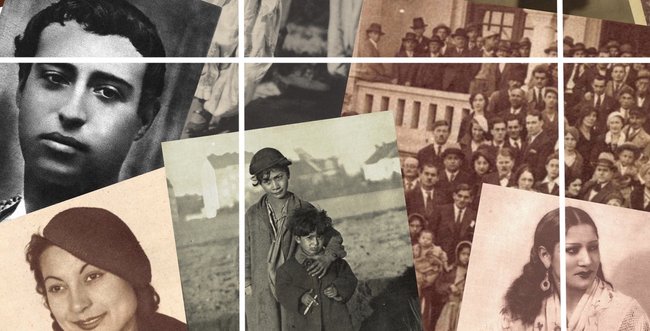International Workshop
Gazes / Countergazes

Roma and Sinti in Photography
February 26, 2026 / University of Vienna / Department of European Ethnology / 9.30 a.m. – 5 p.m.
The workshop deals with central questions of historical and contemporary European culture: How are cultural, social and ethnic boundaries drawn and how are they visually represented? Who determines in images, texts and media discourses where and how the boundaries between the (claimed) ‘self’ and the (imagined) ‘other’ are drawn?
The representation and public perception of Roma and Sinti is characterized by clichés, projections, and attributions far more than the perception of other European minorities. The medium of photography plays a central role in these representations. The history of photographic representations is marked by extreme social inequality between those who stood in front of the camera as subjects and those who operated the camera and edited the images for the media. Until the mid-20th century, the vast majority of photographs published in the media were taken by photographers who did not belong to the group being portrayed. The photographic representations often oscillated between visual strategies of cultural, social, and racist exclusion and marginalization and stereotypical forms of idealization. These strategies of social and visual hierarchization also continued in the area of image processing and in the publication and reception process of the images.
A careful analysis of the surviving image collections also shows that the dichotomous juxtaposition between “active” photographers and “passive” subjects is too simplistic in some respects. Members of the Romani and Sinti minorities were often typecast in stereotypical roles as “strangers,” “others,” and “outsiders,” they were unable to fundamentally challenge the power imbalance inherent in the act of seeing. Nevertheless, historical text and image sources suggest that those portrayed repeatedly intervened actively in the photographic process. The examples range from witty responses to the situation, self-confident attitudes and poses, to openly resistant reactions and cases of explicit refusal to be photographed. The hegemonic, stereotypical, and racist images are thus countered by other, subversive interventions in the act of image-making. Both gazes and the possible counter-gazes are analyzed in the workshop.
Participants:
Kateřina Čapková (Faculty of Philosophy, Charles University, Prague / Prague Centre for Romani Histories)
Vida Bakondy (Austrian Academy of Sciences)
Alexa Färber (University of Vienna, Department of European Ethnology)
Anton Holzer (University of Vienna, Department of European Ethnology)
Andrè Raatzsch (University of Marburg)
Registration, information:
Participation in the workshop (in German) is free of charge.
Please register with Dr Anton Holzer, Department of European Ethnology, University of Vienna: anton.holzer@univie.ac.at
The detailed programme will be announced to all participants in early 2026.